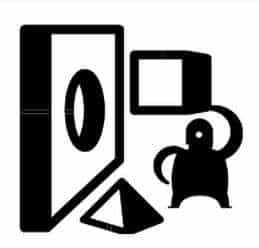How to Solve Problems by Thinking Outside the Box

Have you ever come across a problem that seems impossible to solve? Problem solving starts with innovation. What may be considered impossible in one paradigm may be really easy to solve using another paradigm. This is just one of the ways to solve management problems. So where do all the good ideas come from? Is it possible to solve problems by thinking outside the box?
How to Solve Problems: Known Solutions
How much originality is there in the design process? It’s all a matter of perspective; You see, there are really only two types of problems you encounter: those with known solutions and those with solutions unknown to you.
One way to solve problems is by using known solutions. Problems with known solutions are solved with basic research into standard solutions that have been used before to solve problems of this nature. Hence, the problem is solved with a known solution. The key effort needed to solve such a problem is research.
For example, let’s say you were an automotive engineer designing a new car that needs to travel well over 100 miles per gallon of gasoline. Standard solutions in the industry would be to reduce the weight of the car using lightweight composite materials or reduce the size and options.
In other words, you may consider weight to be the problem and therefore try to minimize the weight by removing as much of it as possible. But will this produce a car that travels over 100 miles per gallon of gasoline?
Problem Solving: Inventive Solutions
In process improvement it is important to look for unknown solutions. So, how do you find unknown solutions? After all, they are unknown, right?
Problems with no known solution are called inventive problems and require inventive solutions. Inventive problems have no known means for a solution and involve one or more contradictions (a situation where an attempt to improve one feature of the system leads to the degradation of another feature).
Typically we solve such problems using brainstorming and trial-and-error . This is the Thomas Edison method of innovation. Edison created 1093 US patents (and thousands more international patents). His works include advancements in telegraphy, the phonograph, a nickel-iron-alkaline battery, and the first commercially successful incandescent lighting system.
To develop the light bulb, Edison tried over 10,000 different filaments until he found one that worked. He believed invention was 1% inspiration and 99% perspiration. But wait a second, isn’t there a better way than to try 10,000 times?
Theory of Inventive Problem Solving (TRIZ)
Of course, you can innovate using TRIZ, a method developed by Genrich S. Altshuller. He screened over 200,000 patents looking for inventive solutions and found that only 40,000 had inventive solutions. The remaining 160,000 were slight improvements on the original design.
Altshuller found that an inventive problem is one in which the solution causes another problem to appear, causing inventors to compromise between features and thus fail to achieve an ideal solution. But in his study of patents, Altshuller found that many described a solution that eliminated or resolved the contradiction and required no trade-off.
Altshuller categorized these patents in a novel way. Instead of classifying them by industry, such as automotive, aerospace, etc., he removed the subject matter to uncover the problem solving process. He found that often the same problems had been solved over and over again using one of only forty fundamental inventive principles. If only later inventors had knowledge of the work of earlier ones, solutions could have been discovered more quickly and efficiently.
The table below shows why inventive problems are especially difficult to solve.
|
Levels |
Degree of inventiveness |
% of solutions |
Source of knowledge |
Approximate # of trials |
|
1 |
Apparent solution |
68.3% |
Personal knowledge |
10 |
|
2 |
Minor improvement |
27.1% |
Knowledge within the company |
100 |
|
3 |
Major improvement |
4.3% |
Knowledge within the industry |
1000 |
|
4 |
New paradigm |
0.24% |
Knowledge outside the industry |
100,000 |
|
5 |
Discovery |
0.06% |
All that is knowable |
1,000,000 |
The table shows how an apparent solution can be found using personal knowledge. You know, the kind you get from experience. But, as we move up the improvement ladder, we must learn more and more until we have learned all that is knowable in order to produce a new discovery. By using TRIZ you can cut through the source of knowledge climb and review only forty fundamental inventive principles.
Remember our automotive engineer? We could use an inventive solution to design a new car that needs to travel well over 100 mile per gallon of gas. Instead of taking weight out we could eliminate the combustion engine and use a different energy system like a hydraulic engine using pressurized fluid. The fluid is pressurized when the car slows down and conserves the lost friction energy in a traditional braking system. The pressure is released to increase speed. A small generator is used to maintain the pressure. But would an automotive engineer think of using a hydraulic engine? This is why innovation is important.

Creativity, Design, and Innovation
We have come full circle back to replication. In design it is possible to replicate using common design concepts like TRIZ to improve our ideas in a systematic way and not have to iterate through 10,000 different ideas to solve a problem. Design flows do differ from manufacturing or cash flows based on the principle of iteration, but we can also find solutions faster by replicating known theoretical solutions to continuously innovate and keep the design cycle moving.
To learn more about implementing continuous process improvement within your organization attend the next improvement class How to Align a System of People and Processes for Results . Or, Learn Writing Policies and Procedures and how to document processes.
Classes are forming now! Call for information on having your own private in-house classes today.















Leave a Reply